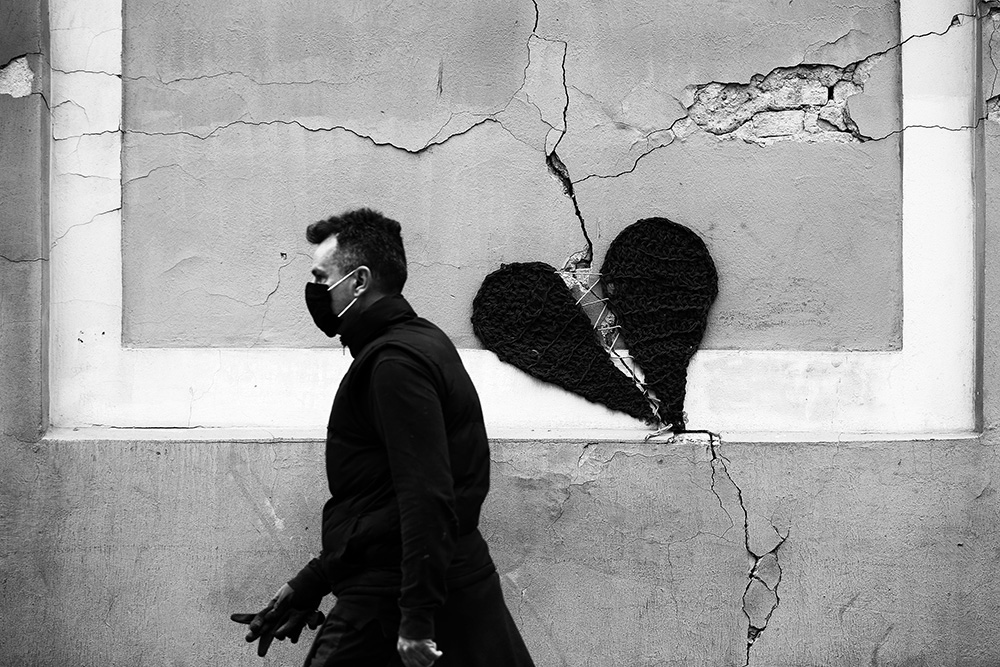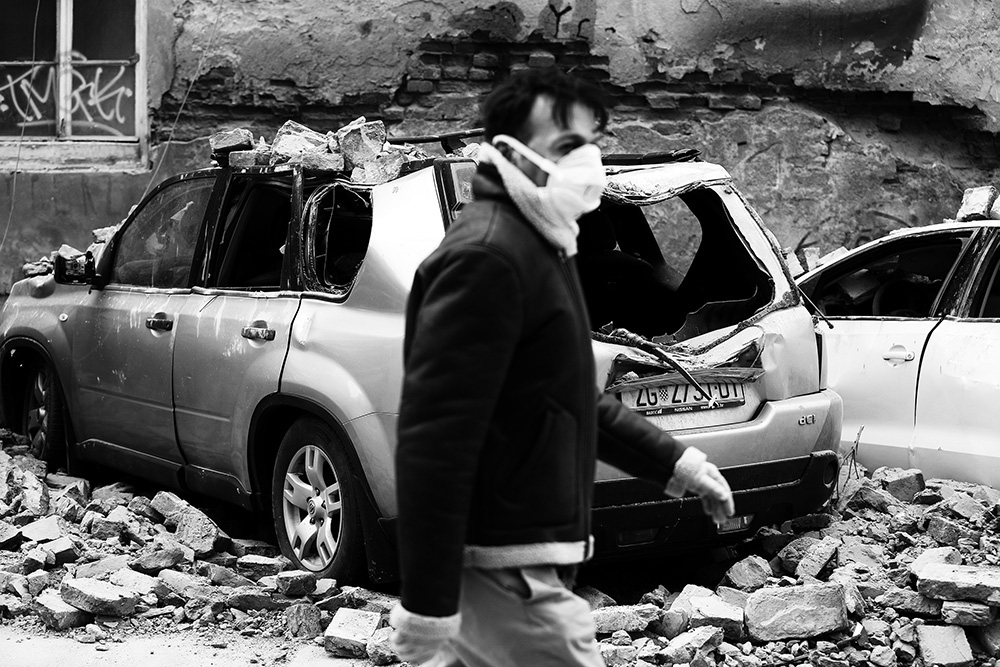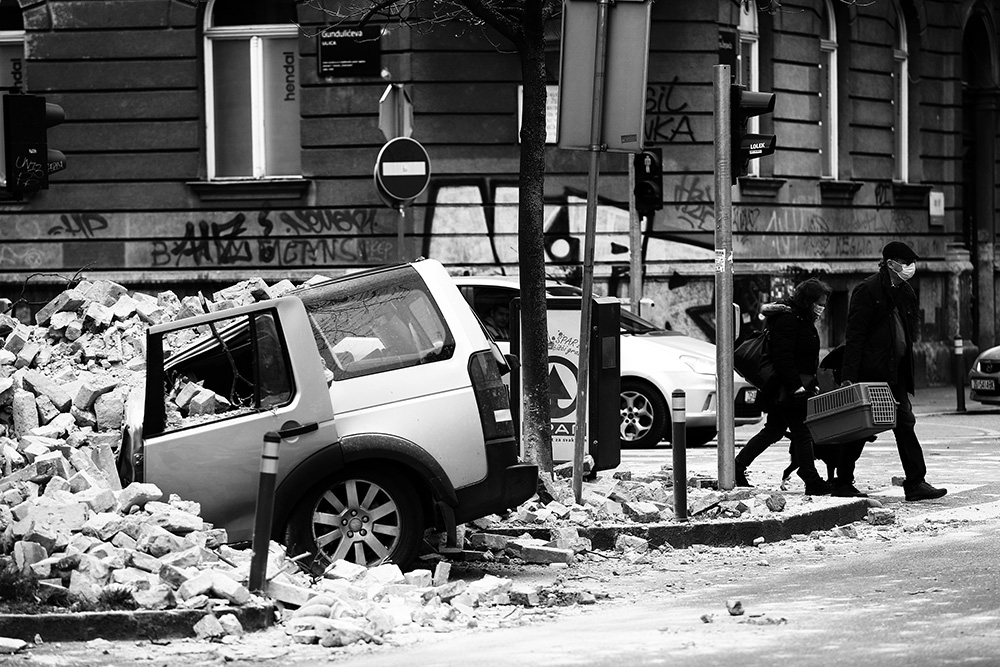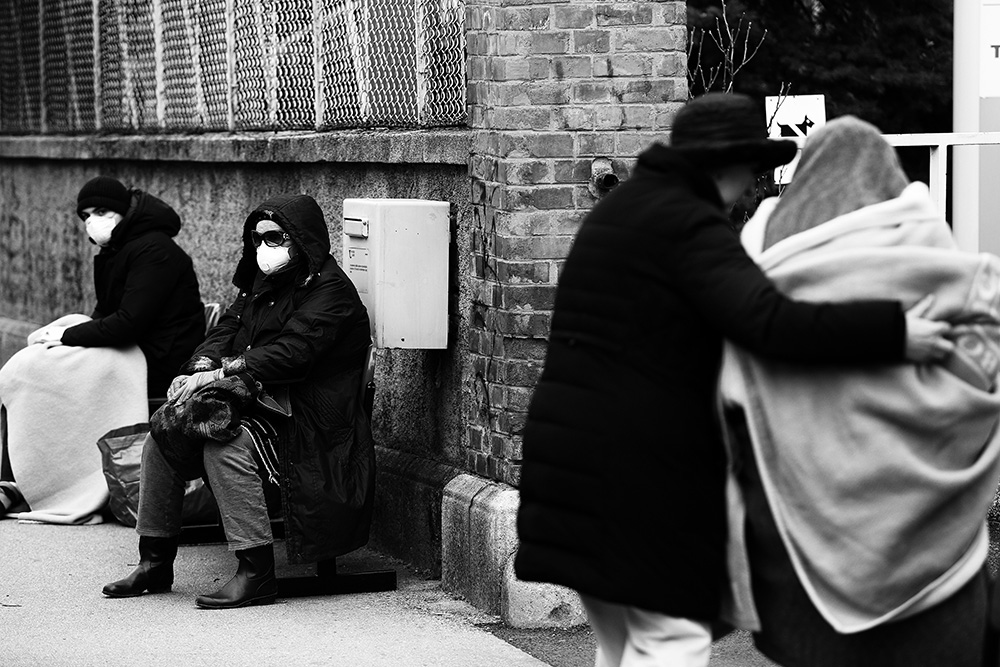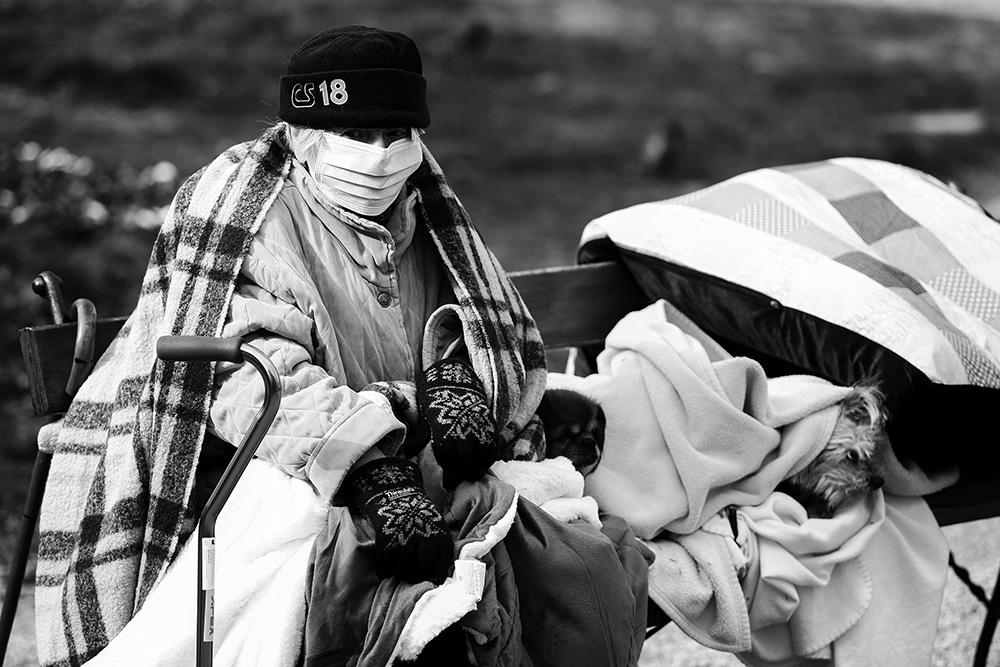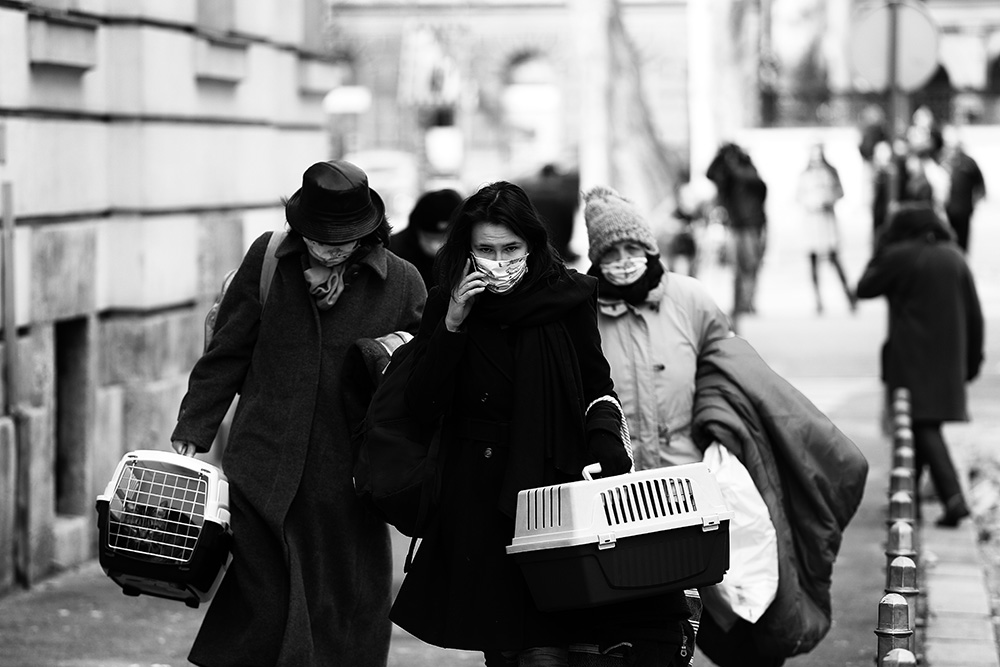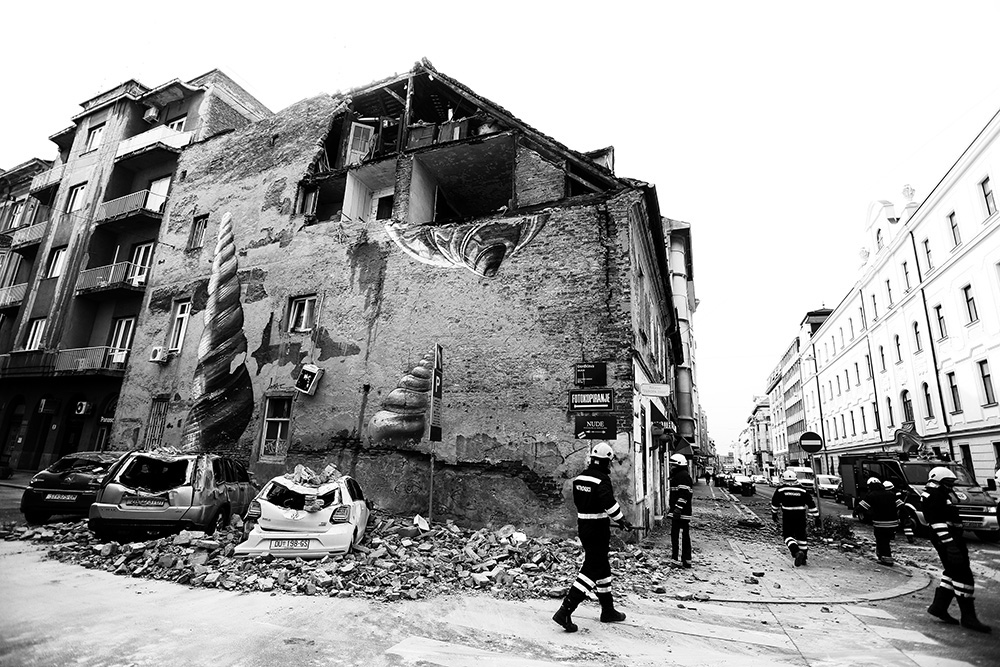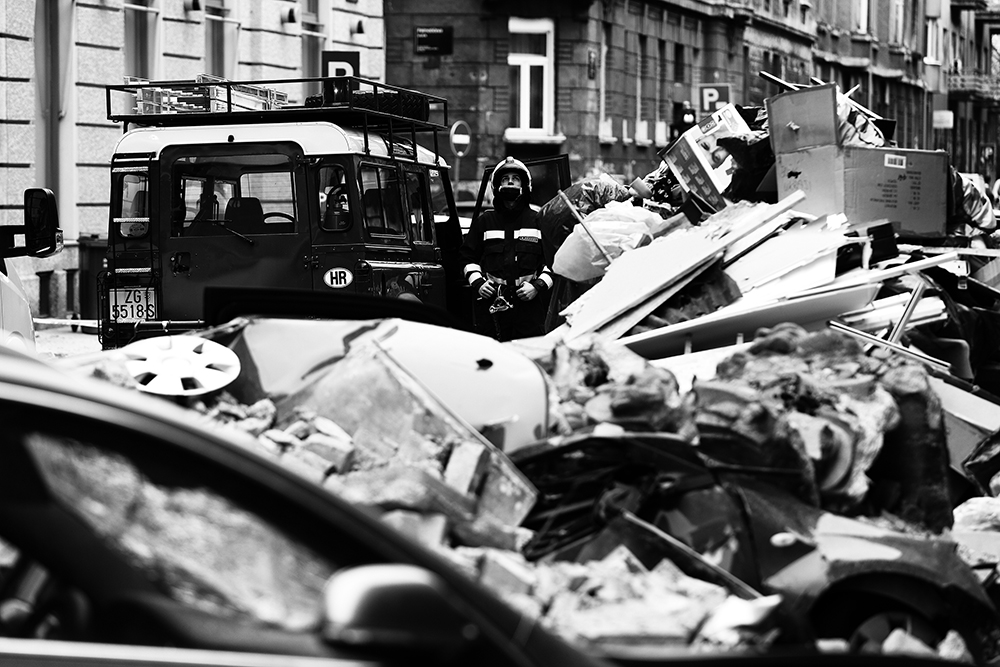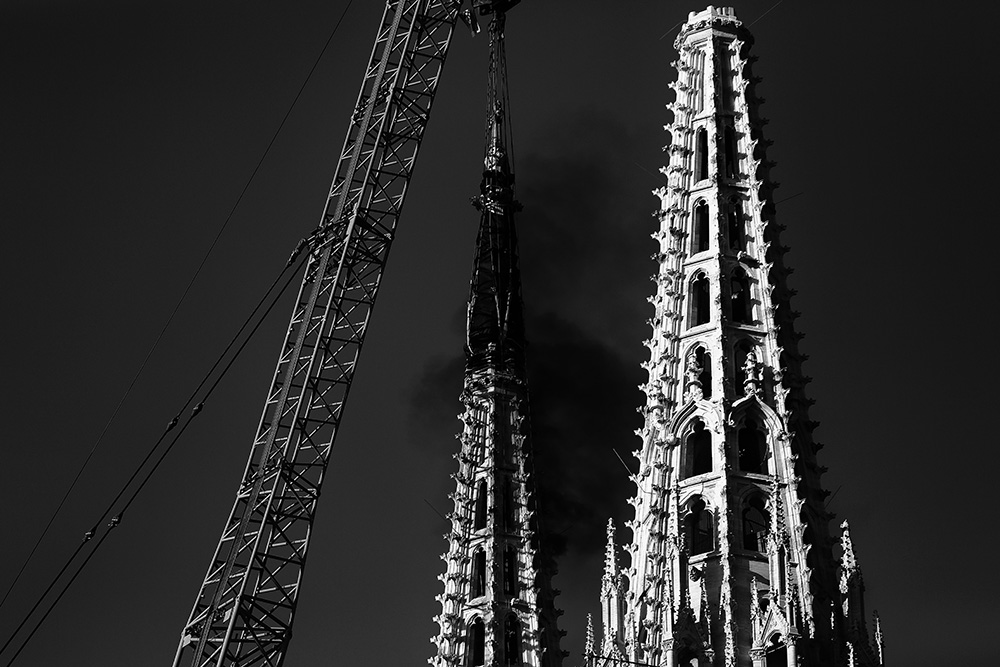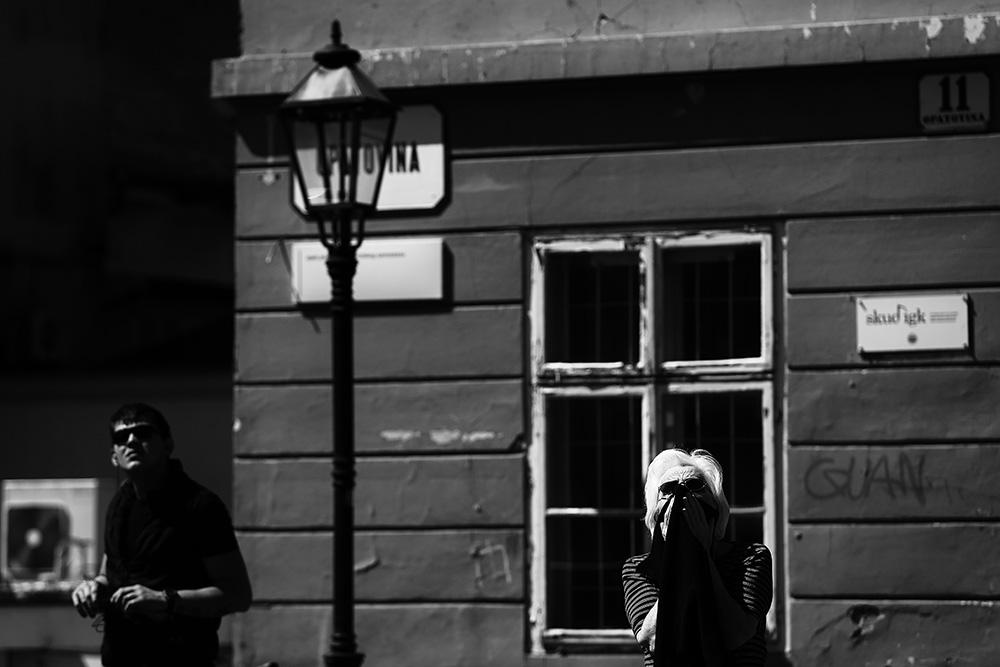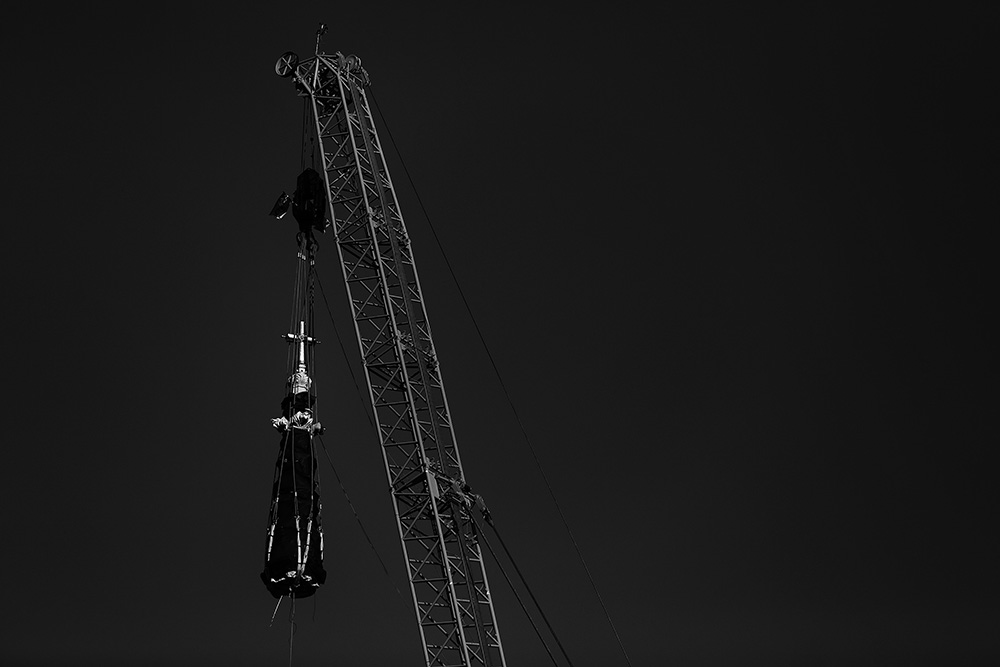Focus on Croatia: Anto Magzan: Zagreb Earthquake
Anto Magzan is a photojournalist and storyteller with a strong background in documentary and street photography. His street photography is about being open to the endless possibilities of different European cities and cultures, from Barcelona and Zagreb to Istanbul. The last big earthquake in Zagreb was in 1880. In his Zagreb Earthquake Series, the spontaneity of street photography comes out. It was an impulsive and emotional response. He was a photojournalist on assignment. His state of mind and emotions set his street photography apart from the documentary with a strong affection for humanity and heritage. A narrative and documentary of the earthquake photograph held together been surreal moments that come once in a lifetime.
During the pandemic and almost 300 earthquakes in the first week of January 2021, I’ve been suffering from fears. Some of them were senseless, and most of them are not. I keep writing this article on the Anto Magzan Zagreb Earthquake series with anxiety, and Lastquake Apps switch on, just in case. We live the same nightmare all over again. I am looking at his aftermath’s earthquake images and found the human side of his documentary. The core of street photography is his emotional response and personal states of shock and fear.
While looking at his work, I think that the New Year should be setting new goals and resolutions. Unfortunately, not this time. I find that many of us have to quit our goals and dreams after the quakes. The future used to be simple, but now everything is up in the air. It has impacted our life significantly. Our world has changed, and in his black and white images, I see the call for a positive impact on people’s life.
Anto Magzan (born 1979) is a Croatian and Bosnian photographer living in Zagreb. He is a lens-based artist with a strong background and experience in documentary and photojournalism. He is known for his black and white photography, both staged or studio portraits and street art photography. He is a freelance photographer with work experience in Croatian daily news (Večernji list, 24sata) and Photo agencies Pixsell and Zuma Press. Besides documentary and narrative, he is interested in street and fine art photography. She attended several masterclasses (Monika Villi, Vittorio Storaro) and workshops (Ron Haviv, Christopher Morris) within the documenting conflict and post-conflict subjects. He has photographed different cities throughout his career, including Sidney, Barcelona, Istanbul, Sarajevo, and Zagreb.
Born in Zenica (Bosnia and Herzegovina) and based in Zagreb (Croatia), he started professional photography very late. Magzan began working in photography at 27, exploring his interest in human portrait and behavior, gatherings, cultural heritage, and rituals. His early photographic influences include the interwar Zagreb school of photography and famous 20th-century black and white Magnum photos, Andre Kertesz, Henry Cartier Bresson, and Eliot Erwitt. He left Bosnia and Herzegovina in 1998 and since then lives and works in Zagreb. He has worked as a photojournalist in Večernji list (Evening Post) since 2006, take pictures covering visual stories on locations, recording-breaking news, investigative features, shows, fashion, and portraits of people. From 2009 to 2017, he works as a member of Pixel, a Croatian Photo Agency.
As a freelance photographer focused on culture, heritage, and fine art photography, he started in 2018. His work was awarded, exhibited, and published, both printed and online. He had seven solo exhibitions and featured in over fifty group exhibitions. Since 2006 he is a member of the Croatian Journalist’s Association HND. He is an active member of the Croatian Association of Artists of Applied Arts ULUPUH. Since 2017 he is president of the Supervisory board of the Photography department. Since 2015 he joined the Croatian Freelance Artists’ Association HZSU. His most recognized images are from portfolios Sydney Light & Shade, Disappearing Architecture, the Golden Years (Athletes Then and Now), Through the Eye of a Needle, Barcelona Light and Shade, and Dervishes. Important national recognition is on his strong portfolio of post-earthquake Zagreb, 2020. IG @antomagzanphotography/
Zagreb Earthquake on March 22, 2020
I started the Zagreb Earthquake series in the early Sunday morning, March 22nd. It all began at 6:23 am with an earthquake. The European seismological agency declared an earthquake measured 5.3 on the Richter scale. It was the strongest earthquake in 140 years at the first peek of the Covid-19 pandemic. In the middle of the spring lockdown in Croatia, we met fear, panic, confusion, and contradiction all over the place. – Stay-at-home; – Leave-your-home!; – Run out of the building!; – Keep social distancing!; – Help each other! (…) People of Zagreb were on the streets, squares, and parks in pajamas, blankets, and face masks.
Authorities called for extra caution in public gatherings because of the prevention of the spreading Covid-19 virus. People were confused, directed to stay at home as a restrictive measure of pandemic prevention, and on the other side, they had to leave their homes. The fear of more trembling was reality. A young girl lost her life downtown. For a moment, we all forgot about social distancing, gathering in the streets in fear, scared to be inside the buildings because of the new earthquakes. It was cold and snowing surreal Sunday at the end of March. I have to save the moments of the worst nightmare.
Zagreb hits 70 smaller earthquakes next week and 300 in the next month. I was in the middle of a disaster movie placed in Zagreb. Over 7000 buildings all over the town were seriously damaged. Cars parked in the middle of the streets were in danger of collapsing buildings and new earthquakes. When I was outside on assignment, I didn’t have time to think about lighting and composition, shapes, and textures. It was in me, just an act, a black and white movie in slow motion, an impulse of the moment. Zagreb was in ruins. Day after and the next few days was disturbing and painful.
The next few days, I was on the streets of Zagreb, deeply involved in documentary and photojournalism. Police, firefighters, Croatian Mountain Rescue Service, contractor workers, and ordinary people were the endless sources of emotions and metaphors of existence and humanity. Removing old chimneys, dangerous remains of buildings were intense and painful. Both towers of the Zagreb cathedral was damaged. One tower collapsed, and the other had to be demolished by a controlled dynamite explosion at 108 meters in height.
A red heart made of wool appears on a cracked wall. This up-to-date installation made by Croatian artist Voona becomes a symbol of healing and hope. It was the message that the city will be rebuilt and healed. Artist sent a message of love we all need all over the world, global, as always. My intention was the same, and Earthquake images extended beyond my initial narrative and documentary. I found strength and ability to defy my purpose as a street photographer.
Draženka Jalšić Ernečić: Why Photography?
Anto Magzan: What attracted me most to photography was the idea that I could send a message to others. With a motive or frame, my photography can give the world something they have not seen or experienced themselves. It may be a common thing from everyday life or the glorious view of a city they haven’t been to, but the result is the same: people see something the way I saw it. It is a privilege that rarely has any interest. The most significant compliment I can get is while people tell me that an image I have photographed has unique.
Draženka Jalšić Ernečić: When did you discover the path of being a photographer/artist?
Anto Magzan: When I moved to Zagreb from Zenica after the war, I work several jobs, but I always felt I needed a creative space to express myself. I’ve always loved art, and I’ve had the luck to spend time with photographers. I recognized that images bring together what pleases me most in my life. It is art and communication with the people and word. Photography always has something new and different and demands mental commitment, dares me to enter into a personal connection with the essence of what I am looking for. Photography keeps me awake.
DJ: What are your challenges as an artist?
Anto Magzan: I am not struggling with inspiration because I always have ideas and motives. I am the lucky one. The highest challenges in photography are logical to me. I was pleased that most of my work, for instance, the series of black and white images of cities Light & Shade, was recognized and successful. Most ideas and projects need some institutional and financial support. Photographers have to be social media and marketing experts at the same time and invest too much time in getting supporters.
Draženka Jalšić Ernečić: Is there anything you would like to tell us that nobody has ever asked you about photography?
Anto Magzan: As I started taking photography late, at the age of 27, sometimes it seems that I was driving behind. I felt I missed important things, but I quickly realized that everything I did and experienced in my life helped me create my photos. I began to analyze the world with photography and to watch it with all differences. Everything I have learned and experienced so far has turned into images, and it seems that this is the case with every other art, and art pushes the boundaries of our freedom.
Draženka Jalšić Ernečić: What’s next?
Anto Magzan: Despite the circumstances, 2020 was successful for me. I participated in twelve big projects. Unfortunately, my creativity this year was marked by the Zagreb earthquake and pandemic. I got recognition for those photos. At this point, I am attending a three-month workshop by Christopher Morris of the VII Agency. Last year, I captured two series from the Light & Shade cycle, Istanbul and Sarajevo. They were supposed to be in a solo show in 2020. As life is on hold because of the global pandemic, I will try to organize those two exhibitions this year.
Draženka Jalšić Ernečić is a senior curator, researcher, writer, editor, and reviewer of visual arts and photography, having published criticism in the history of art and photo collections, graphic design, packaging, and photography. The focus of her endeavors is to work with photographers and photo communities to promote global cultural exchanges in photography.
Drazenka Jalsic Ernecic has been a museum curator and museum storyteller, editor and photo-editor, and administrator for over 25 years. Currently, she is a senior curator of art collections at the Koprivnica Museum in Croatia. Previously, she was the museum director, program manager, editor, and publisher. She participates in the exhibition organization and production and museum workshops and lectures. Through her work in museum management, she participated in fundraising and program evaluation components, which led to her interest in using evaluation strategies to better understand curatorial and organizational processes in art museums and photography collections, both private and public. Other previous experience includes industrial and corporate marketing, which she practices in a museum, photo-editing, portfolio reviews, and criticism of photo-based visual arts. Drazenka presents widely at national and international photo festivals, reviews, competitions, and exhibitions. Her research interests include curation, evaluation, and interpretation of photography and photo-based visual arts.
Posts on Lenscratch may not be reproduced without the permission of the Lenscratch staff and the photographer.
Recommended
-
Andrew Lichtenstein: This Short Life: Photojournalism as Resistance and ConcernDecember 21st, 2025
-
Paccarik Orue: El MuquiDecember 9th, 2025
-
Lauri Gaffin: Moving Still: A Cinematic Life Frame-by-FrameDecember 4th, 2025
-
Dani Tranchesi: Ordinary MiraclesNovember 30th, 2025
-
Art of Documentary Photography: Elliot RossOctober 30th, 2025

